best Bee Gees songs (A-Z) ↓↓↓

Scroll down and discover the best Bee Gees songs (A-Z)!
We've meticulously organized our extensive library for your convenience. Explore best Bee Gees songs sorted by popularity to easily find the tracks that resonate most with listeners, or browse through our alphabetical (A-Z) listing to discover hidden gems and classic favorites alike. Whether you’re a long-time fan or new to Bee Gees music, there’s something for everyone to enjoy.
♫Bee Gees
Best Bee Gees songs
- 1 Stayin’ Alive
- 2 Words
- 3 How Deep Is Your Love
- 4 Massachusetts
- 5 Night Fever
- 6 Grease
- 7 To Love Somebody
- 8 How Can You Mend A Broken Heart?
- 9 More Than A Woman
- 10 I Started A Joke
- 11 Alive
- 12 I Close My Eyes
- 13 Alone
- 14 Holiday
- 15 Don’t Forget To Remember
- 16 Lonely Days
- 17 Tragedy
- 18 Run To Me
- 19 My World
- 20 Nights On Broadway
- 21 Heartbreaker
- 22 Islands In The Stream
- 23 First Of May
- 24 Angela
- 25 Emotion
- 26 Alone Again
- 27 Saved By The Bell
- 28 I’ve Gotta Get A Message To You
- 29 If I Can’t Have You
- 30 Guilty
A-Z songs of Bee Gees (267)
- ♫ 2 Years On
- ♫ Above And Beyond
- ♫ Alive
- ♫ All This Making Love
- ♫ Alone
- ♫ Alone Again
- ♫ And The Sun Will Shine
- ♫ Angela
- ♫ Anything For You
- ♫ August October
- ♫ Baby As You Turn Away
- ♫ Back Home
- ♫ Backtafunk
- ♫ Bad Bad Dreams
- ♫ Be Who You Are
- ♫ Big Chance
- ♫ Birdie Told Me
- ♫ Black Diamond
- ♫ Blue Island
- ♫ Bodyguard
- ♫ Boogie Child
- ♫ Born A Man
- ♫ Bury Me Down By The River
- ♫ Can’t Keep A Good Man Down
- ♫ Charade
- ♫ Children Of The World
- ♫ Close Another Door
- ♫ Closer Than Close
- ♫ Come Home Johnny Bride
- ♫ Come On Over
- ♫ Country Lanes
- ♫ Craise Finton Kirk Royal Academy Of Arts
- ♫ Crazy For Your Love
- ♫ Cryin’ Every Day
- ♫ Cucumber Castle
- ♫ Daytime Girl
- ♫ Dearest
- ♫ Deja Vu
- ♫ Dimensions
- ♫ Dogs
- ♫ Don’t Fall In Love With Me
- ♫ Don’t Forget To Remember
- ♫ Don’t Want To Live Inside Myself
- ♫ Down Came The Sun
- ♫ Down The Road
- ♫ Down To Earth
- ♫ E.s.p.
- ♫ E.s.p. (vocal Reprise)
- ♫ Edge Of The Universe
- ♫ Edison
- ♫ Embrace
- ♫ Emotion
- ♫ Every Christian Lion Hearted Man Will Show You
- ♫ Every Second, Every Minute
- ♫ Evolution
- ♫ Fallen Angel
- ♫ Fanny (be Tender With My Love)
- ♫ Farmer Ferdinand Hudson
- ♫ First Of May
- ♫ Flesh And Blood
- ♫ For Whom The Bell Tolls
- ♫ Ghost Train
- ♫ Give A Hand, Take A Hand
- ♫ Give Me A Smile
- ♫ Give Your Best
- ♫ Giving Up The Ghost
- ♫ Glass House
- ♫ Gone Gone Gone
- ♫ Grease
- ♫ Guilty
- ♫ Had A Lot Of Love Last Night
- ♫ Happy Ever After
- ♫ Harry Braff
- ♫ Haunted House
- ♫ He’s A Liar
- ♫ Heart Like Mine
- ♫ Heartbreaker
- ♫ Heavy Breathing
- ♫ High Civilization
- ♫ Holiday
- ♫ Horizontal
- ♫ House Of Shame
- ♫ How Can You Mend A Broken Heart?
- ♫ How Deep Is Your Love
- ♫ How Many Birds
- ♫ How To Fall In Love, Pt. 1
- ♫ Human Sacrifice
- ♫ I Can Bring Love
- ♫ I Can’t Let You Go
- ♫ I Can’t See Nobody
- ♫ I Close My Eyes
- ♫ I Could Not Love You More
- ♫ I Don’t Know Why I Bother With Myself
- ♫ I Don’t Wanna Be The One
- ♫ I Have Decided To Join The Airforce
- ♫ I Held A Party
- ♫ I Laugh In Your Face
- ♫ I Lay Down And Die
- ♫ I Started A Joke
- ♫ I Still Love You
- ♫ I Surrender
- ♫ I Was The Child
- ♫ I Will
- ♫ I Will Be There
- ♫ I’m Satisfied
- ♫ I’m Weeping
- ♫ I’ve Gotta Get A Message To You
- ♫ I.o.i.o.
- ♫ Idea
- ♫ If I Can’t Have You
- ♫ If Only I Had My Mind On Something Else
- ♫ Immortality
- ♫ In My Own Time
- ♫ Indian Gin And Whiskey Dry
- ♫ Irresistible Force
- ♫ Islands In The Stream
- ♫ Israel
- ♫ It’s Just The Way
- ♫ It’s My Neighborhood
- ♫ Jingle Jangle
- ♫ Jive Talkin’
- ♫ Just In Case
- ♫ Kilburn Towers
- ♫ Kiss Of Life
- ♫ Kitty Can
- ♫ Lamplight
- ♫ Lay It On Me
- ♫ Lemons Never Forget
- ♫ Let There Be Love
- ♫ Lion In Winter
- ♫ Live Or Die (hold Me Like A Child)
- ♫ Living Eyes
- ♫ Living In Chicago
- ♫ Living Together
- ♫ Lonely Days
- ♫ Loose Talk Costs Lives
- ♫ Lost In Your Love
- ♫ Love Me
- ♫ Love So Right
- ♫ Love You Inside Out
- ♫ Lovers
- ♫ Man For All Seasons
- ♫ Man In The Middle
- ♫ Marley Purt Drive
- ♫ Massachusetts
- ♫ Melody Fair
- ♫ Method To My Madness
- ♫ Miracles Happen
- ♫ Monday’s Rain
- ♫ More Than A Woman
- ♫ Morning Of My Life
- ♫ Mother And Jack
- ♫ Mr. Natural
- ♫ My Life Has Been A Song
- ♫ My Lover’s Prayer
- ♫ My Thing
- ♫ My World
- ♫ Never Been Alone
- ♫ Never Say Never Again
- ♫ New York Mining Disaster 1941
- ♫ Night Fever
- ♫ Nights On Broadway
- ♫ Nothing Could Be Good
- ♫ Obsessions
- ♫ Odessa
- ♫ Omega Man
- ♫ One
- ♫ One Minute Woman
- ♫ Ordinary Lives
- ♫ Our Love (don’t Throw It All Away)
- ♫ Overnight
- ♫ Paper Mache, Cabbages & Kings
- ♫ Paradise
- ♫ Party With No Name
- ♫ Paying The Price Of Love
- ♫ Playdown
- ♫ Please Don’t Turn Out The Lights
- ♫ Please Read Me
- ♫ Portrait Of Louise
- ♫ Promise The Earth
- ♫ Reaching Out
- ♫ Really And Sincerely
- ♫ Red Chair Fade Away
- ♫ Remembering
- ♫ Road To Alaska
- ♫ Run To Me
- ♫ Sacred Trust
- ♫ Saved By The Bell
- ♫ Saw A New Morning
- ♫ Sea Of Smiling Faces
- ♫ Search, Find
- ♫ Second Hand People
- ♫ Secret Love
- ♫ She Keeps On Coming
- ♫ Sincere Relation
- ♫ Smoke And Mirrors
- ♫ Soldiers
- ♫ Somebody Stop The Music
- ♫ Songbird
- ♫ Sound Of Love
- ♫ South Dakota Morning
- ♫ Spicks And Specks
- ♫ Spirits (having Flown)
- ♫ Stayin’ Alive
- ♫ Stop (think Again)
- ♫ Subway
- ♫ Such A Shame
- ♫ Suddenly
- ♫ Swan Song
- ♫ Sweet Song Of Summer
- ♫ Sweetheart
- ♫ Tears
- ♫ Technicolour Dreams
- ♫ Tell Me Why
- ♫ The 1st Mistake I Ever Made
- ♫ The Chance Of Love
- ♫ The Change Is Made
- ♫ The Earnest Of Being George
- ♫ The Extra Mile
- ♫ The Greatest Man In The World
- ♫ The Longest Night
- ♫ The Lord
- ♫ The Only Love
- ♫ The Summer On His Years
- ♫ The Way It Was
- ♫ The Worst Girl In This Town
- ♫ Then You Left Me
- ♫ This Is Where I Came In
- ♫ This Is Your Life
- ♫ Throw A Penny
- ♫ Tint Of Blue
- ♫ To Love Somebody
- ♫ Tokyo Nights
- ♫ Too Much Heaven
- ♫ Trafalgar
- ♫ Tragedy
- ♫ True Confessions
- ♫ Turn Of The Century
- ♫ Turning Tide
- ♫ Until
- ♫ Voice In The Wilderness
- ♫ Voices
- ♫ Walking Back To Waterloo
- ♫ Walking On Air
- ♫ We Lost The Road
- ♫ Wedding Day
- ♫ Weekend
- ♫ When Do I
- ♫ When He’s Gone
- ♫ When The Swallows Fly
- ♫ Where Are You
- ♫ While I Play
- ♫ Whisper Whisper
- ♫ Wildflower
- ♫ Will You Ever Let Me
- ♫ Wind Of Change
- ♫ Wing And A Prayer
- ♫ Wish You Were Here
- ♫ With My Eyes Closed
- ♫ With The Sun In My Eyes
- ♫ Words
- ♫ World
- ♫ You Know It’s For You
- ♫ You Should Be Dancing
- ♫ You Stepped Into My Life
- ♫ You Win Again
- ♫ You’ll Never See My Face Again
Albums of Bee Gees
-
 This Is Where I Came In (2001)
This Is Where I Came In (2001)
-
 Still Waters (1997)
Still Waters (1997)
-
 Size Isn’t Everything (1993)
Size Isn’t Everything (1993)
-
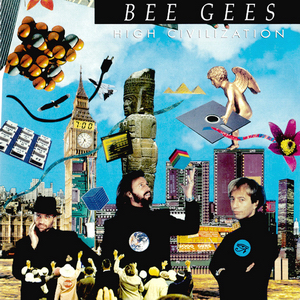 High Civilization (1991)
High Civilization (1991)
-
 One (1989)
One (1989)
-
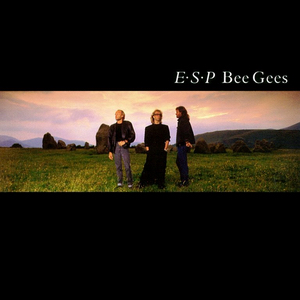 E·S·P (1987)
E·S·P (1987)
-
 Living Eyes (1981)
Living Eyes (1981)
-
 Spirits Having Flown (1979)
Spirits Having Flown (1979)
-
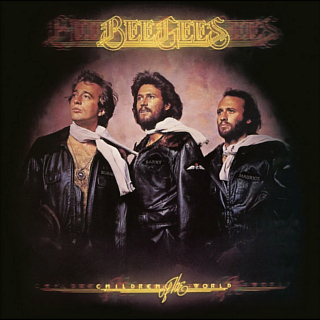 Children of the World (1976)
Children of the World (1976)
-
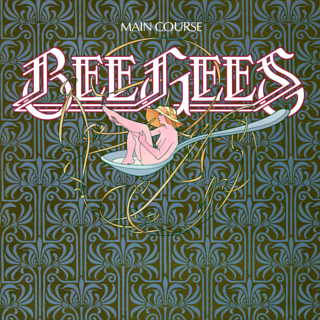 Main Course (1975)
Main Course (1975)
-
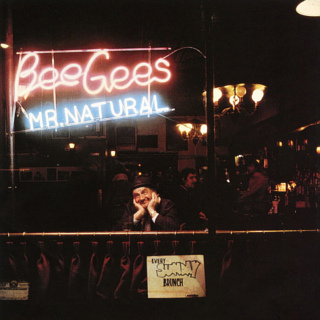 Mr. Natural (1974)
Mr. Natural (1974)
-
 Life in a Tin Can (1973)
Life in a Tin Can (1973)
-
 To Whom It May Concern (1972)
To Whom It May Concern (1972)
-
 Trafalgar (1971)
Trafalgar (1971)
-
 Cucumber Castle (1970)
Cucumber Castle (1970)
-
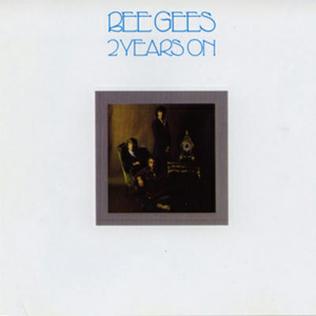 2 Years On (1970)
2 Years On (1970)
-
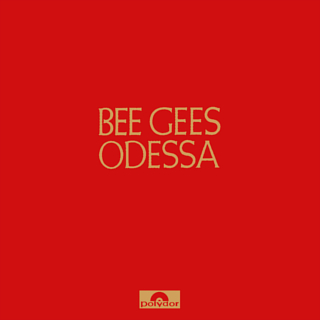 Odessa (1969)
Odessa (1969)
-
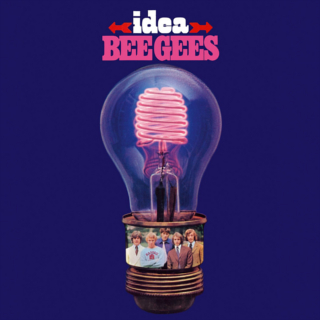 Idea (1968)
Idea (1968)
-
 Horizontal (1968)
Horizontal (1968)
-
 Bee Gees’ 1st (1967)
Bee Gees’ 1st (1967)
-
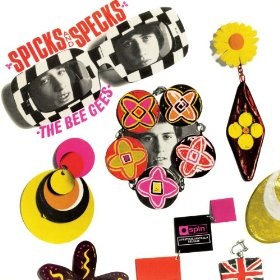 Spicks and Specks (1966)
Spicks and Specks (1966)
-
 The Bee Gees Sing and Play 14 Barry Gibb Songs (1965)
The Bee Gees Sing and Play 14 Barry Gibb Songs (1965)